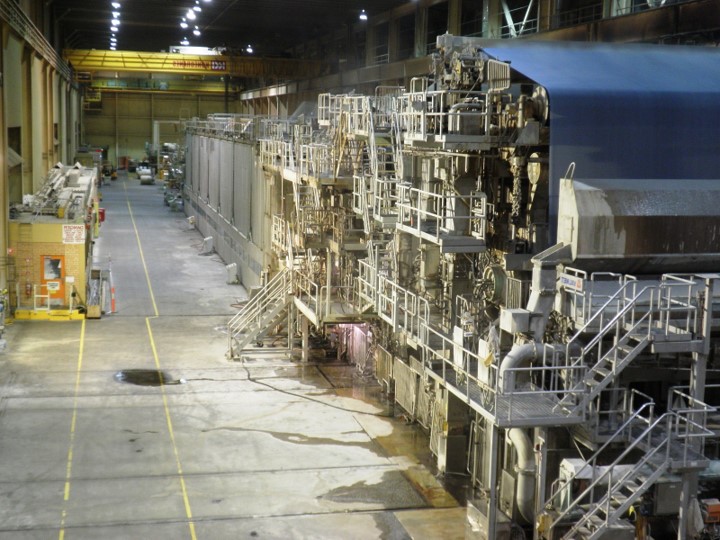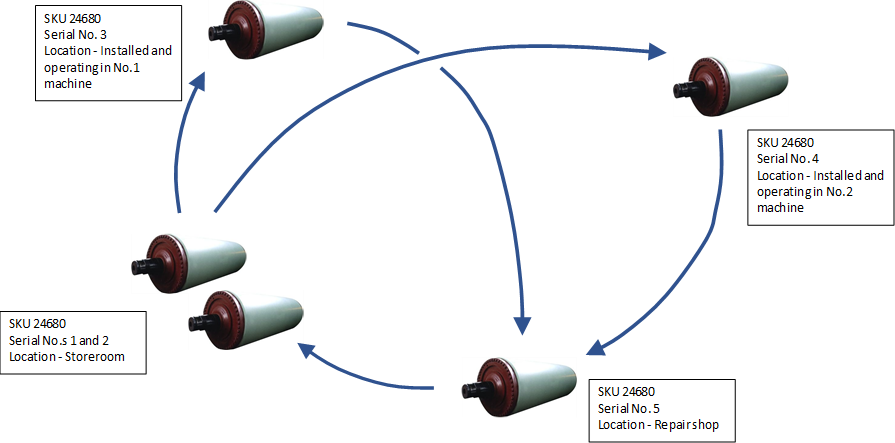Related articles – Managing repairable spare parts
“Serialized” spare parts are repairable components, usually expensive and complex, where each individual item needs to be tracked and recorded to ensure reliability.
Serialized components are often in contact with the process and require refurbishing several times over their life span. The example I’ll use here are covered rolls used on a paper machine, such as the machine in the picture below.

Covered paper machine rolls have a steel or cast-iron core and a resilient cover. As the cover wears in service, it must be removed from the machine, surface-ground and returned to storage ready for re-use. When the cover reaches a minimum thickness, it must be sent to a specialist shop for re-covering.
There may be several rolls that are identical when new and they all should have the same material catalogue number. Each also needs a unique serial number that is used to keep a record of the cover thickness and condition. These rolls move through a cycle as illustrated below:

Paper machine rolls are an example of components that wear, there are a large number of them in various shapes and sizes and are absolutely critical to the operation. Being without a spare when it is needed will result in a very expensive extended shutdown. In a typical paper mill, the management of rolls is assigned to a very experienced Planner, or similar position.
While most popular maintenance computer systems have the functionality to manage serialized repairable spare parts, it is not uncommon to find that the system is not used for this purpose. In fact, rolls may be managed completely outside the maintenance inventory process. This could be because:
– users have not been trained to use the serial-tracking process
– the process is too complex
– the system functionality does not support the specialized detailed condition reports required
– the system security does not protect condition-tracking information from unauthorized changes
– users have been through one change in maintenance software, have lost critical information and don’t want to be caught again
– the system, generally, is not trusted to manage critical components
or more than one of the above.
As a results, roll records are often found on personal computers or in an independent “roll-tracking” system.
If you have components that require serial tracking, the five concerns listed above should be reviewed in detail with your maintenance software supplier, preferably prior to purchase, with the goal of keeping all critical maintenance data in the same system.
Assigning serial numbers to repairable components should not be used to compensate for reliability problems. For example, I have seen pump rotating assemblies with serial numbers so that “rogue” components (that have a shorter operating life than others) can be tracked. Serial tracking is a significant administrative load and it is far better to put this effort into eliminating these kinds of unreliable components by identifying root causes and eliminating them, usually through better repair procedures. This will be covered in more detail in next month’s article.
To return to the “Articles” index, click here.
© Veleda Services Ltd
Don Armstrong, P. Eng, President